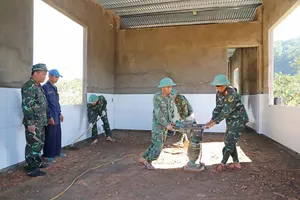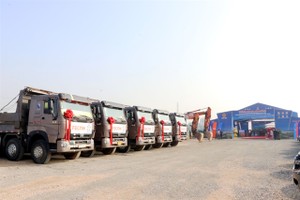
While the recent explosion in locally infected cases recorded in Vietnam can mainly be traced back to Da Nang, especially the three hospitals in the city, the risks of virus spread in the community remains significant, Dam said, requiring all localities and the public to be cautious.
He was addressing an emergency meeting of the National Steering Committee for COVID-19 Prevention and Control held in Hanoi on August 9.
“No one can tell for certain that the coronavirus has been completely eliminated in the community,” he said.
The vigilant spirit must be held high at all times, or a resurgence of the virus could appear like it did recently after months of relaxed measures with no new locally transmitted cases, Dam continued.
He added that if the country continues to well implement anti-pandemic measures, which have been tightened in the last two weeks since the discovery of the first case in Da Nang’s outbreak, "we have the confidence that the outbreak will not explode on a wider scale.”
Not only in the current epicentres of the outbreak like Da Nang or Quang Nam, all protocols are in all localities – with health workers and public security officers at the forefront – have been restarted and been constantly active, Dam said.
Recently, the health ministry sent five inspection teams to local level to assess the readiness, he said.
Assoc. Prof. Tran Dac Phu, former Director of the Department of Preventive Medicine under the Ministry of Health, said anti-pandemic measures have been carried out aggressively and effectively in Da Nang, which is now under lockdown.
At this point, it could be said that the outbreak in Da Nang is under control, Phu said.
Le Quang Cuong, former Deputy Minister of Health, asked that information campaigns be enhanced in the future so that public awareness and community-minded spirit would be raised, and everyone would not let their guards down, maintain proper hygiene to protect themselves, their family, and the community in the new normal.
Regarding tests, the steering committee said capacity has been improving a lot compared to previous outbreaks, including the production of test kits and diagnostic machines.
In Da Nang, with the massive number of people needed to be tested in the community, the health ministry decided they would implement ‘pool testing’, where specimens collected from five people would be combined and tested via a single test, said Acting Minister of Health Nguyen Thanh Long.
If the test’s results return positive, then all those five people will be tested again individually, Long said.
This will significantly speed up population-level screening, especially in the high-risk groups, the minister said.
“However, no matter how much we raise our testing capacity, we could never be able to conduct testing of all people, even in just a province, in a short timeframe,” Dam said.
“Therefore, the most important and effective measure is to identify cases, fast trace and focus testing on high-risk groups.”
In Da Nang, health workers are processing about 8,000-9,000 specimens a day.
Dam said through the practical lessons and experience obtained in Da Nang recently, guidelines need to be compiled so that other localities could quickly deploy necessary measures when community cases are discovered.
He also urged people to install health declaration and contact tracing apps like NCOVI and Bluezone to better identify potential cases.
























